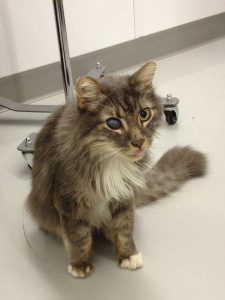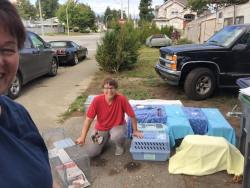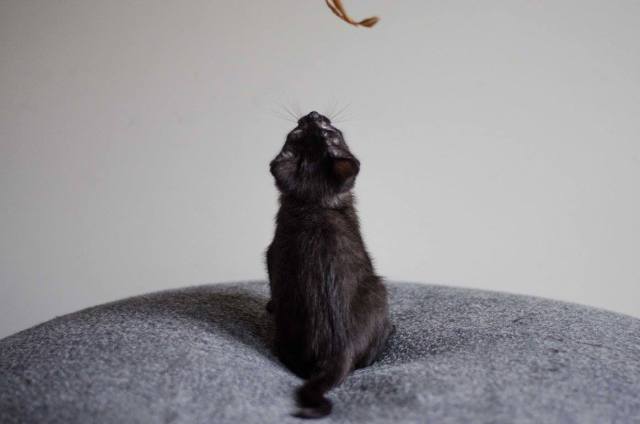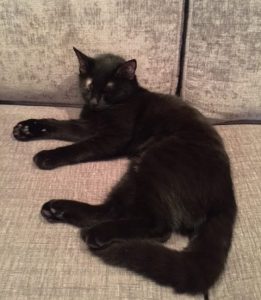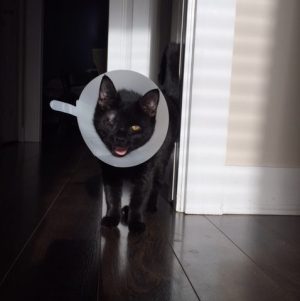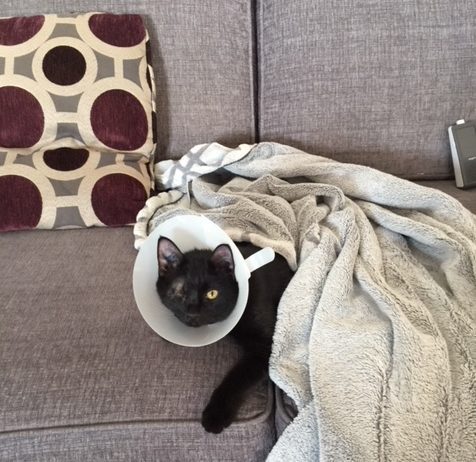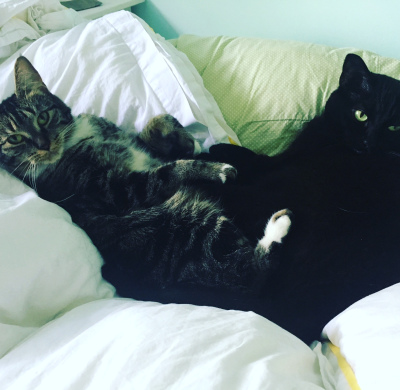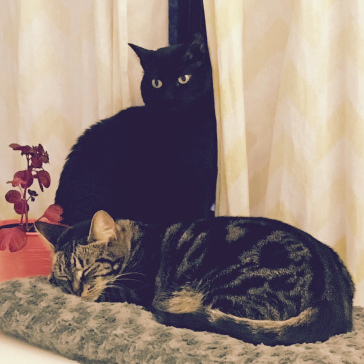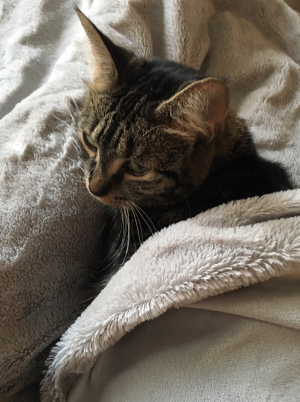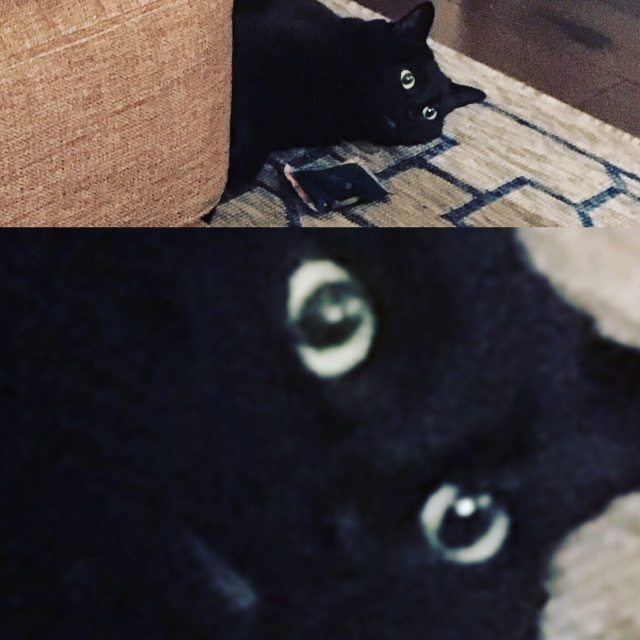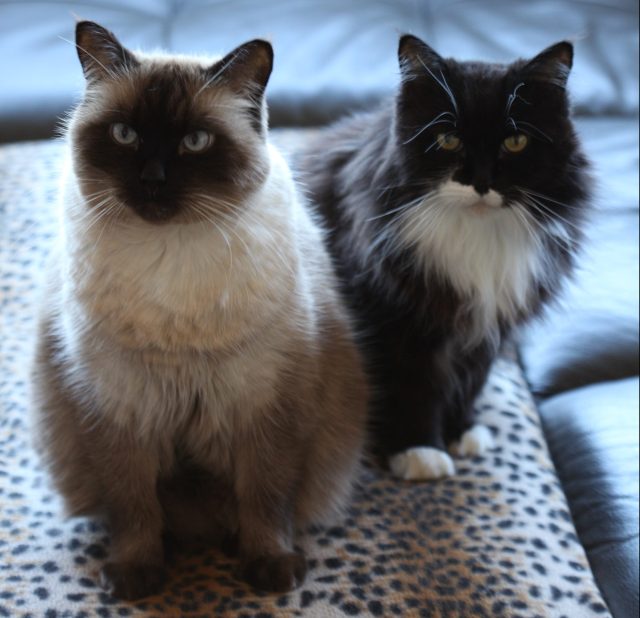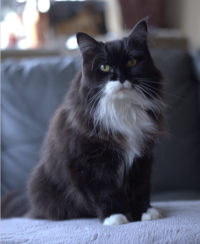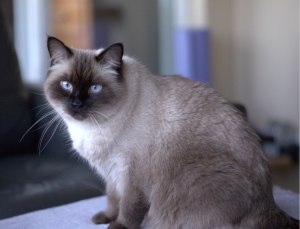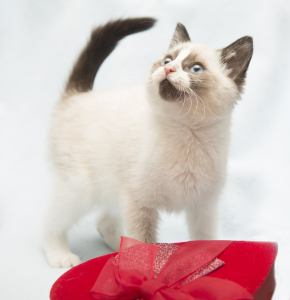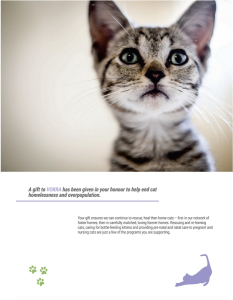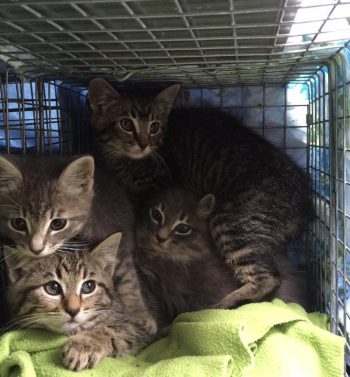 At VOKRA our mission is to end cat overpopulation and homelessness. One of the ways we’re helping accomplish this is through to Trap-Neuter-Return (TNR), the process of trapping feral cats, spaying or neutering them, and then returning them to the location they came from. We’ve seen a lot of success with TNR, but much of our time is actually spent on trapping tame strays. Trapping these cats and kittens is the first step towards finding them their furever homes.
At VOKRA our mission is to end cat overpopulation and homelessness. One of the ways we’re helping accomplish this is through to Trap-Neuter-Return (TNR), the process of trapping feral cats, spaying or neutering them, and then returning them to the location they came from. We’ve seen a lot of success with TNR, but much of our time is actually spent on trapping tame strays. Trapping these cats and kittens is the first step towards finding them their furever homes.
When we receive information about a stray cat, we find out as much information as we can to help us determine the best way to trap. We take into account how long the cat(s) has been hanging around and their lingering behaviour – are they coming at a specific time or are they around all the time? It’s important to know if they’re being fed or eating as well. Getting to know as much about the cats as possible is key to making a quick and successful trap. Behaviours such as skittishness or curiosity help us determine the correct method.
At times, it’s as easy as coaxing the cat into a carrier. Other times, setting up a trap is the only way. Traps are usually set up where the cat is being fed and include fresh tuna at the back of the trap. With feral cats, they’re taken to the vet for sedation and spay/neuter, vaccinations, ear and dental cleaning and flea treatment. They recover at our Operations Centre and are then taken back to their original location. The individual who called about the cat will be provided with food and any follow-up care. With tame cats, after they’re trapped they’re taken to our Operations Centre where we check for a microchip or tattoo. We deflea, deworm and vaccinate these kitties and have blood tests, urinalysis and teeth cleaning completed if they’re more than five years old. These tame cats are then ready for a foster home and, when they’re ready, will go up for adoption.
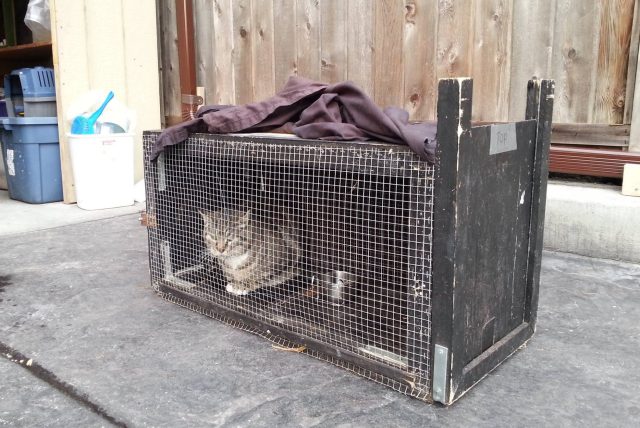
This is “Woody”, trapper Janet Cox‘s trusty wooden trap. She uses it to trap kitties who refuse to go into a metal trap. It always works like a charm!
It may seem feral cats could be more problematic than tame strays, but it’s just as important to trap these tame cats. Owned cats get lost and abandoned, which is a painful situation. If they aren’t fixed, they breed and female cats will usually give birth to their kittens outside or under garages, or amongst junk in a yard. These kittens will then grow up unsocialized by humans and grow into feral cats. If these kittens are also not spay/neutered, the cycle repeats itself and soon a feral colony will be formed. This is why it’s important for cat owners to spay and neuter their cats by five months old, and for the public to call us if they suspect a tame or feral stray who hasn’t been fixed is lingering around their neighbourhood.
Sometimes, our trappings don’t go as planned, as explained here by VOKRA co-founder and trapper extraordinaire Maria Soroski:
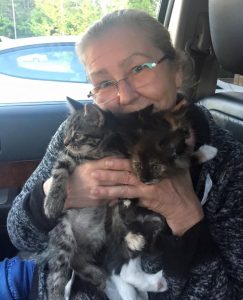
Maria will a mitt-full of kittens trapped by Anne.
“I was called out to an industrial area in Burnaby because the business said they heard meowing coming from under the floorboards of the trailer on their property,” said Maria. “Since I couldn’t remove the floorboards, I crawled under the trailer to where they pinpointed they heard the kittens. When I found the area above me between the floorboards, I heard the noise – they were baby raccoons! I got out of there as soon as possible before the mama raccoon got mad.”
After trapping for 17 years and counting, Maria’s has countless stories. Here’s one of her most memorable ones (for cats, not racoons!):
“At least twelve years ago, I went to a location in East Vancouver where there were three adult feral cats, two female and one male, and a litter of five kittens that were eight weeks old,” explains Maria. “It was January, bitter cold that night with snow that had fallen on the ground. I set traps by the back lane garage for the kittens first and waited in my car to keep warm. Two kittens went in the traps immediately and as I was carrying the two traps to my car, I was suddenly surrounded by the adult cats. They were hissing so I ran as fast as I could to my car with the kittens in the traps while they chased me. I waited in my car again until the remaining kittens went into the traps. The three adult cats were waiting by my car, so I quickly opened the door and ran to the last traps. As I was bending down to pick up the traps, the two adult females jumped onto my back, growling and swatting. I managed to get them off me and got all the traps to my car. The adults were jumping up at my window, so I threw an open can of cat food onto the grass, started the car and drove off as they ran behind my car.”
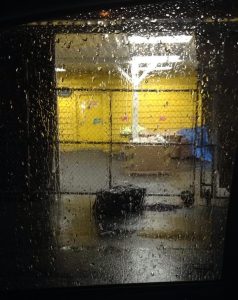
5:30 a.m. – Maria’s view as she waits patiently for some kittens, who were dumped in a back alley. to decide to go into the trap.
“I’ve never had this happen to me again, but I felt so bad for the cats as they saw their babies be driven away,” continues Maria. “The next night, I went and set traps for all three of the adult cats and took them to the vet for spaying and neutering. They stayed a couple days with us to recover and I let them see the kittens. It seemed to calm them down, knowing I didn’t cook their babies for dinner. The feral adults were returned to their original location and taken care of outside by the person who called us.”
Trapping isn’t an easy job, as we can all now see. It requires dedication and commitment to VOKRA’s mission. The trapping of tame strays is especially important as they have socialized with humans before, making them adoptable into a furever home. However, furever homes can’t exist if we don’t have pet-friendly housing. Global BC covers the issue here, making it clear our housing issues are a big cause for the loss of homes and families for too many pets. Sign the Pets OK BC petition here to help make a difference. Our trapping efforts are rendered useless if these kitties have less and less places to go once they’re ready for adoption.
Thank you to all our volunteer trappers who spend hours and hours watching over traps – be it sunshine or rain, day or night. Due to your efforts thousands of kitties have been taken off the streets and now have homes to call their own!
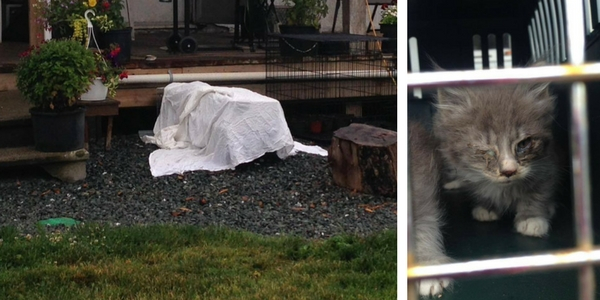
A mama and four kittens were trapped from under this porch. All the kittens had eye infections, but it was their lucky day. They were transferred to our Operations Centre for assessment and then onto foster care where they received daily treatment. Today mom and kittens are all healthy and have been adopted into loving homes.
 February is the month of love and we have an endless amount of it for our volunteers! This month we’re celebrating Mandy Douglas and her dedication to ensuring newly adopted kitties are insured. Here she tells us in her own words why she volunteers for VOKRA:
February is the month of love and we have an endless amount of it for our volunteers! This month we’re celebrating Mandy Douglas and her dedication to ensuring newly adopted kitties are insured. Here she tells us in her own words why she volunteers for VOKRA: